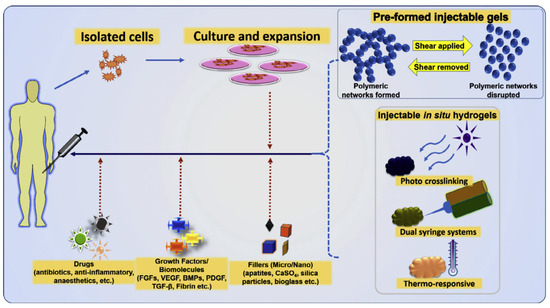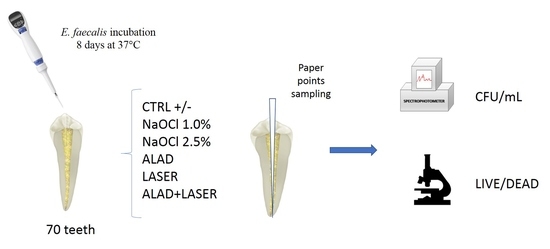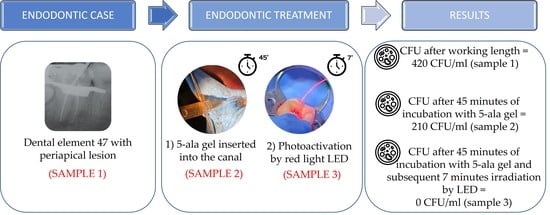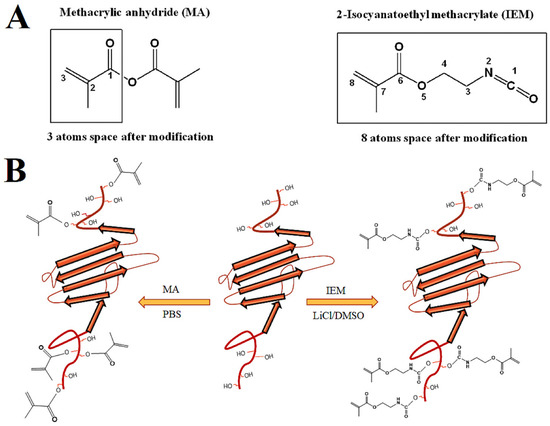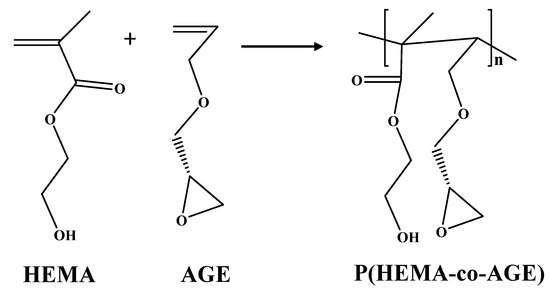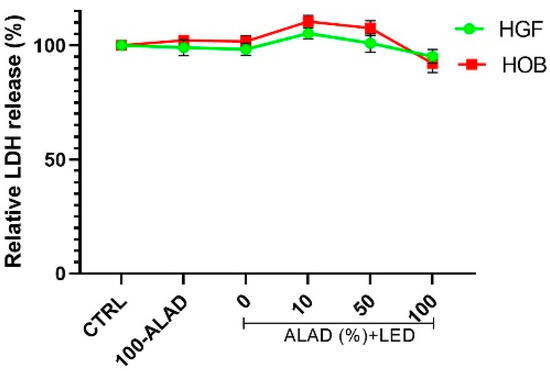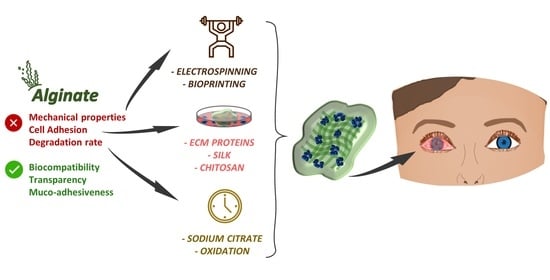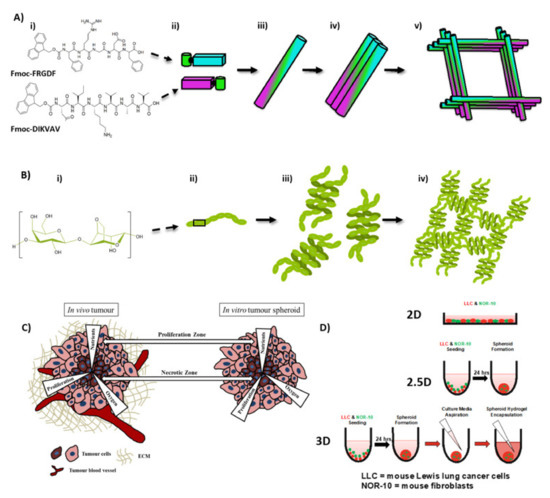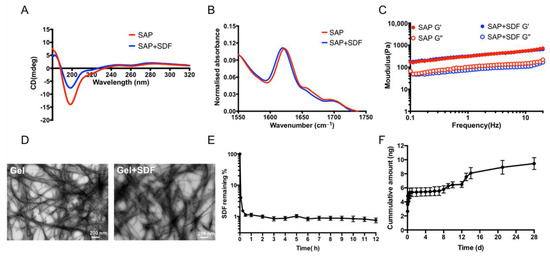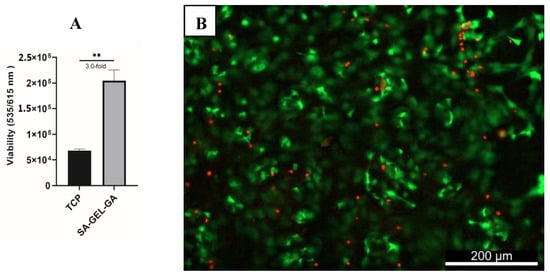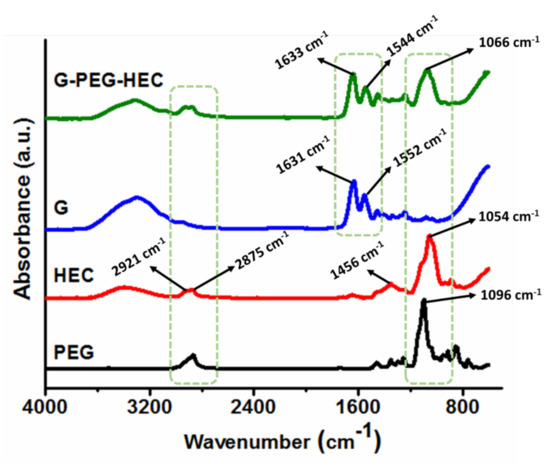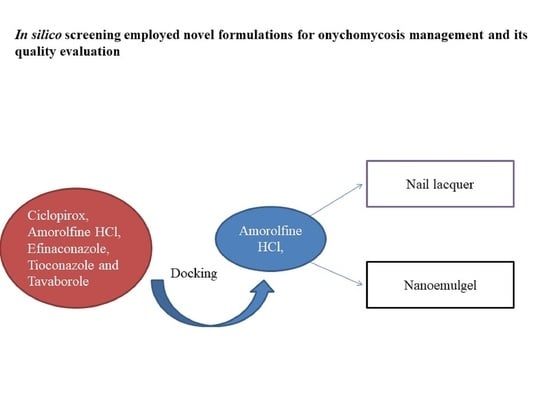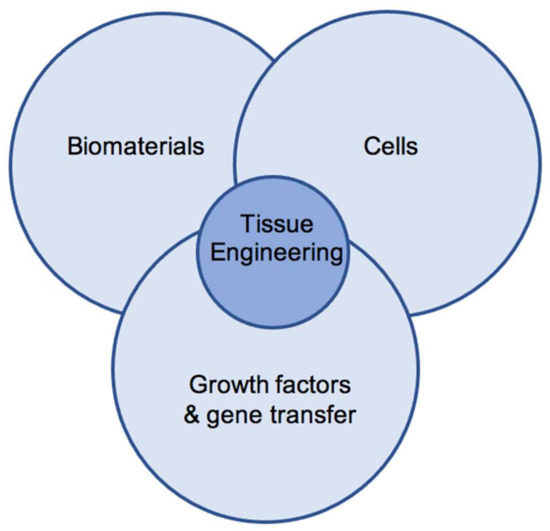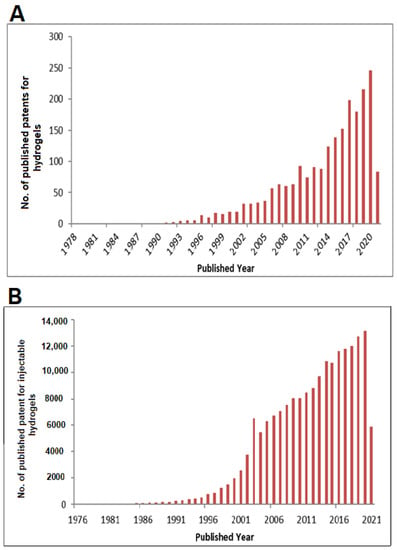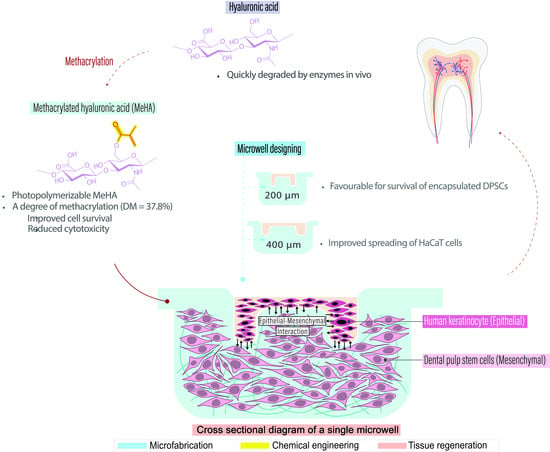Hydrogel in Tissue Engineering and Regenerative Medicine
A topical collection in Gels (ISSN 2310-2861). This collection belongs to the section "Gel Applications".
Viewed by 113397
Share This Topical Collection
Editor
 Prof. Dr. Esmaiel Jabbari
Prof. Dr. Esmaiel Jabbari
 Prof. Dr. Esmaiel Jabbari
Prof. Dr. Esmaiel Jabbari
E-Mail
Website
Collection Editor
Biomimetic Materials and Tissue Engineering Laboratory, Department of Chemical Engineering, University of South Carolina, Columbia, SC 29208, USA
Interests: bioinspired gels; gels for stem cell delivery; self-assembled micelles for growth factor immobilization; models gels to control cell microenvironment; composite materials with structure at multiple length scales; skeletal tissue engineering
Special Issues, Collections and Topics in MDPI journals
Topical Collection Information
Dear Colleagues,
Hydrogels form the foundation of tissue engineering and regenerative medicine as a supportive matrix for cell immobilization and growth factor delivery. Hydrogels, due to their wide range of properties, have been used as injectable, in situ gelling, or patterned matrices; viscous gels; thin sheets; and three-dimensional scaffolds in regenerative medicine to guide and regulate cell fate. It has been widely established that the fate of implanted cells is mediated by cell–matrix and matrix–morphogen interactions at multiple length scales from nano- to macroscale. The fate of multicellular implants depends on the timed release of growth factors to guide the differentiation and maturation of cells toward the desired lineage for each cell type. As a result, there has recently been a great interest in hydrogels with hierarchical structures that mimic the complex interaction of cells with their microenvironment at multiple length scales as well as hydrogels that can locally target growth factors to specific cells at predefined time scales. Related topics for this Topical Collection include hydrogels with a hierarchical structure; self-assembled hydrogels; hybrid and degradable hydrogels; load-bearing and self-healing hydrogels; hydrogels for cell encapsulation and biofabrication; hydrogels for patterning and microfluidic devices and high-throughput screening; injectable and in situ hardening hydrogels for minimally invasive applications; hydrogels that modulate the body’s immune response; and hydrogels for the spatiotemporal delivery of growth factors.
Prof. Dr. Esmaiel Jabbari
Collection Editor
Manuscript Submission Information
Manuscripts should be submitted online at www.mdpi.com by registering and logging in to this website. Once you are registered, click here to go to the submission form. Manuscripts can be submitted until the deadline. All submissions that pass pre-check are peer-reviewed. Accepted papers will be published continuously in the journal (as soon as accepted) and will be listed together on the collection website. Research articles, review articles as well as short communications are invited. For planned papers, a title and short abstract (about 100 words) can be sent to the Editorial Office for announcement on this website.
Submitted manuscripts should not have been published previously, nor be under consideration for publication elsewhere (except conference proceedings papers). All manuscripts are thoroughly refereed through a single-blind peer-review process. A guide for authors and other relevant information for submission of manuscripts is available on the Instructions for Authors page. Gels is an international peer-reviewed open access monthly journal published by MDPI.
Please visit the Instructions for Authors page before submitting a manuscript.
The Article Processing Charge (APC) for publication in this open access journal is 2100 CHF (Swiss Francs).
Submitted papers should be well formatted and use good English. Authors may use MDPI's
English editing service prior to publication or during author revisions.
Published Papers (22 papers)
Open AccessReview
Advancements in Hydrogels for Corneal Healing and Tissue Engineering
by
Kevin Y. Wu, Shu Yu Qian, Anne Faucher and Simon D. Tran
Cited by 13 | Viewed by 5058
Abstract
Hydrogels have garnered significant attention for their versatile applications across various fields, including biomedical engineering. This review delves into the fundamentals of hydrogels, exploring their definition, properties, and classification. Hydrogels, as three-dimensional networks of crosslinked polymers, possess tunable properties such as biocompatibility, mechanical
[...] Read more.
Hydrogels have garnered significant attention for their versatile applications across various fields, including biomedical engineering. This review delves into the fundamentals of hydrogels, exploring their definition, properties, and classification. Hydrogels, as three-dimensional networks of crosslinked polymers, possess tunable properties such as biocompatibility, mechanical strength, and hydrophilicity, making them ideal for medical applications. Uniquely, this article offers original insights into the application of hydrogels specifically for corneal tissue engineering, bridging a gap in current research. The review further examines the anatomical and functional complexities of the cornea, highlighting the challenges associated with corneal pathologies and the current reliance on donor corneas for transplantation. Considering the global shortage of donor corneas, this review discusses the potential of hydrogel-based materials in corneal tissue engineering. Emphasis is placed on the synthesis processes, including physical and chemical crosslinking, and the integration of bioactive molecules. Stimuli-responsive hydrogels, which react to environmental triggers, are identified as promising tools for drug delivery and tissue repair. Additionally, clinical applications of hydrogels in corneal pathologies are explored, showcasing their efficacy in various trials. Finally, the review addresses the challenges of regulatory approval and the need for further research to fully realize the potential of hydrogels in corneal tissue engineering, offering a promising outlook for future developments in this field.
Full article
►▼
Show Figures
Open AccessReview
Nanofabrication Technologies to Control Cell and Tissue Function in Three-Dimension
by
Hidenori Otsuka
Cited by 11 | Viewed by 3033
Abstract
In the 2000s, advances in cellular micropatterning using microfabrication contributed to the development of cell-based biosensors for the functional evaluation of newly synthesized drugs, resulting in a revolutionary evolution in drug screening. To this end, it is essential to utilize cell patterning to
[...] Read more.
In the 2000s, advances in cellular micropatterning using microfabrication contributed to the development of cell-based biosensors for the functional evaluation of newly synthesized drugs, resulting in a revolutionary evolution in drug screening. To this end, it is essential to utilize cell patterning to control the morphology of adherent cells and to understand contact and paracrine-mediated interactions between heterogeneous cells. This suggests that the regulation of the cellular environment by means of microfabricated synthetic surfaces is not only a valuable endeavor for basic research in biology and histology, but is also highly useful to engineer artificial cell scaffolds for tissue regeneration. This review particularly focuses on surface engineering techniques for the cellular micropatterning of three-dimensional (3D) spheroids. To establish cell microarrays, composed of a cell adhesive region surrounded by a cell non-adherent surface, it is quite important to control a protein-repellent surface in the micro-scale. Thus, this review is focused on the surface chemistries of the biologically inspired micropatterning of two-dimensional non-fouling characters. As cells are formed into spheroids, their survival, functions, and engraftment in the transplanted site are significantly improved compared to single-cell transplantation. To improve the therapeutic effect of cell spheroids even further, various biomaterials (e.g., fibers and hydrogels) have been developed for spheroid engineering. These biomaterials not only can control the overall spheroid formation (e.g., size, shape, aggregation speed, and degree of compaction), but also can regulate cell-to-cell and cell-to-matrix interactions in spheroids. These important approaches to cell engineering result in their applications to tissue regeneration, where the cell-biomaterial composite is injected into diseased area. This approach allows the operating surgeon to implant the cell and polymer combinations with minimum invasiveness. The polymers utilized in hydrogels are structurally similar to components of the extracellular matrix in vivo, and are considered biocompatible. This review will provide an overview of the critical design to make hydrogels when used as cell scaffolds for tissue engineering. In addition, the new strategy of injectable hydrogel will be discussed as future directions.
Full article
►▼
Show Figures
Open AccessArticle
Efficacy of 5% Aminolaevulinic Acid and Red Light on Enterococcus faecalis in Infected Root Canals
by
Teocrito Carlesi, Tatiane Cristina Dotta, Tania Vanessa Pierfelice, Emira D’Amico, Stefania Lepore, Domenico Tripodi, Adriano Piattelli, Simonetta D’Ercole and Morena Petrini
Cited by 6 | Viewed by 2521
Abstract
Background: In this ex vivo study, the aim was to evaluate the effects of ALAD and red light on
Enterococcus faecalis in infected root canals using a special intracanal fiber. Methods: A total of 70 extracted, single-rooted teeth were used. The teeth were
[...] Read more.
Background: In this ex vivo study, the aim was to evaluate the effects of ALAD and red light on
Enterococcus faecalis in infected root canals using a special intracanal fiber. Methods: A total of 70 extracted, single-rooted teeth were used. The teeth were decoronated at the length of the roots to approximately 15 mm and then instrumented. The apical foramen was sealed by composite resin, and the root canals were infected with a pure culture of
E. faecalis ATCC 29212 for eight days at 37 °C. Following the contamination period, the roots were divided into seven groups, including the positive and negative control groups, and treated as follows: ALAD 45 min; red light activation 7 min; ALAD 45 min and red-light activation 7 min; sodium hypochlorite 2.5% 15 min; sodium hypochlorite 1% 15 min. The samples were taken by three sterile paper points, transferred to tubes containing 1 mL of PBS, and immediately processed for the number of colony-forming units and the cell viability by using live/dead. Results: The best treatment is obtained with 2.5% NaOCl. Except for ALAD + red light vs. 1% NaOCl, a statistically significant difference is recorded for all treatments. The combination of 2.5% NaOCl and ALAD + 7 min irradiation produces an evident killing effect on the
E. faecalis cells. On the other hand, 1% NaOCl is ineffective for the viability action, with 25% of dead cells stained in red. Conclusions: This ex vivo study shows that ALAD gel with light irradiation is an efficacious protocol that exerts a potent antibacterial activity against
E. faecalis in infected root canals.
Full article
►▼
Show Figures
Open AccessArticle
5-Aminolevulinic Acid and Red Led in Endodontics: A Narrative Review and Case Report
by
Simonetta D’Ercole, Teocrito Carlesi, Tatiane Cristina Dotta, Tania Vanessa Pierfelice, Emira D’Amico, Domenico Tripodi, Giovanna Iezzi, Adriano Piattelli and Morena Petrini
Cited by 7 | Viewed by 3173
Abstract
The present study aims to discuss the main factors involving the use of 5-aminolevulinic acid together with red LED light and its application in endodontic treatment through a narrative review and a case report. Persistence of microorganisms remaining on chemical-mechanical preparation or intracanal
[...] Read more.
The present study aims to discuss the main factors involving the use of 5-aminolevulinic acid together with red LED light and its application in endodontic treatment through a narrative review and a case report. Persistence of microorganisms remaining on chemical-mechanical preparation or intracanal dressing is reported as the leading cause of failure in endodontics. Photodynamic therapy has become a promising antimicrobial strategy as an aid to endodontic treatment. Being easy and quick to apply, it can be used both in a single session and in several sessions, as well as not allowing forms of microbial resistance. 5-aminolevulinic acid in combination with red LED light has recently been studied in many branches of medicine, with good results against numerous types of bacteria including
Enterococuss faecalis. The case report showed how bacterial count of CFU decreased by half (210 CFU/mL), after 45 min of irrigation with a gel containing 5% of 5-aminolevulinic acid compared to the sample before irrigation (420 CFU/mL). The subsequent irradiation of red LED light for 7 min, the bacterial count was equal to 0. Thus, it is concluded that the use of 5-aminolevulinic acid together with red LED light is effective in endodontic treatment.
Full article
►▼
Show Figures
Open AccessArticle
Material Properties and Cell Compatibility of Photo-Crosslinked Sericin Urethane Methacryloyl Hydrogel
by
Safaa Kader and Esmaiel Jabbari
Cited by 12 | Viewed by 3640
Abstract
There is a need to develop novel cytocompatible hydrogels for cell encapsulation and delivery in regenerative medicine. The objective of this work was to synthesize isocyanato ethyl methacryloyl-functionalized sericin and determine its material properties as a natural hydrogel for the encapsulation and delivery
[...] Read more.
There is a need to develop novel cytocompatible hydrogels for cell encapsulation and delivery in regenerative medicine. The objective of this work was to synthesize isocyanato ethyl methacryloyl-functionalized sericin and determine its material properties as a natural hydrogel for the encapsulation and delivery of human mesenchymal stem cells (MSCs) in regenerative medicine. Sericin extracted from silk cocoons was reacted with 2-isocyanatoethyl methacrylate (IEM) or methacrylic anhydride (MA) to produce sericin urethane methacryloyl (SerAte-UM) or sericin methacryloyl (SerAte-M, control) biopolymers, respectively. The hydrogels produced by photo-crosslinking of the biopolymers in an aqueous solution were characterized with respect to gelation kinetics, microstructure, compressive modulus, water content, degradation, permeability, and viability of encapsulated cells. The secondary structure of citric acid-extracted sericin was not affected by functionalization with IEM or MA. SerAte-UM hydrogel was slightly more hydrophilic than SerAte-M. The gelation time of SerAte-UM hydrogel decreased with an increasing degree of modification. The photo-polymerized SerAte-UM hydrogel had a highly porous, fibrous, honeycomb microstructure with an average pore size in the 40–50 µm range. The compressive modulus, swelling ratio, and permeability of SerAte-UM hydrogel depended on the degree of modification of sericin, and the mass loss after 21 days of incubation in aqueous solution was <25%. Both SerAte-UM and SerAte-M hydrogels supported viability and growth in encapsulated MSCs. The SerAte-UM hydrogel, with its higher hydrophilicity compared to SerAte-M, is promising as a matrix for encapsulation and delivery of stem cells in tissue engineering.
Full article
►▼
Show Figures
Open AccessArticle
Synthesis and Characterization of a New Cryogel Matrix for Covalent Immobilization of Catalase
by
Canan Altunbaş, Ahmet Aslan, Kevser Kuşat, Mehtap Sahiner, Sinan Akgöl and Nurettin Sahiner
Cited by 16 | Viewed by 3117
Abstract
The advantages of cryogels for enzyme immobilization applications include their mechanical and chemical robustness, ease of production, superior porosity, and low cost. Currently, many researchers are exploring porous material-based systems for enzyme immobilization that are more efficient and economically viable. Here, poly(2-Hydroxyethyl methacrylate-co-allyl
[...] Read more.
The advantages of cryogels for enzyme immobilization applications include their mechanical and chemical robustness, ease of production, superior porosity, and low cost. Currently, many researchers are exploring porous material-based systems for enzyme immobilization that are more efficient and economically viable. Here, poly(2-Hydroxyethyl methacrylate-co-allyl glycidyl ether) (p(HEMA-co-AGE)) cryogel matrices were synthesized via the free radical cryopolymerization method to be employed as the support material. For the immobilization of the catalase enzyme onto the p(HEMA-co-AGE) cryogel matrix (catalase@p(HEMA-co-AGE), the best possible reaction conditions were determined by altering parameters such as pH, catalase initial concentration, and flow rate. The maximum catalase immobilization amount onto the p(HEMA-co-AGE) cryogel was found to be 48 mg/g cryogel. To determine the advantages of the cryogel matrix, e.g., the stability and reusability of the cryogel matrix, the adsorption–desorption cycles for the catalase enzyme were repeated five times using the same cryogel matrix. At the end of the reusability tests, it was found that the cryogel was very stable and maintained its adsorption capacity with the recovery ratio of 93.8 ± 1.2%. Therefore, the p(HEMA-co-AGE) cryogel matrix affords repeated useability, e.g., up to five times, without decreasing its catalase binding capacities significantly and has promising potential for many industrial applications. Cryogels offer clear distinctive advantages over common materials, e.g., micro/nano particles, hydrogels, films, and composites for these applications. At present, many researchers are working on the design of more effective and economically feasible, porous material-based systems for enzyme immobilization
Full article
►▼
Show Figures
Open AccessArticle
The Effects of 5% 5-Aminolevulinic Acid Gel and Red Light (ALAD-PDT) on Human Fibroblasts and Osteoblasts
by
Tania Vanessa Pierfelice, Emira D’Amico, Morena Petrini, Assunta Pandolfi, Camillo D’Arcangelo, Natalia Di Pietro, Adriano Piattelli and Giovanna Iezzi
Cited by 8 | Viewed by 2925
Abstract
This study aimed to evaluate the effects of a new photodynamic protocol (ALAD-PDT), consisting of 5% 5-aminolevulinic acid-gel and 630 nm-LED, already used for antibacterial effects in the treatment of periodontitis, on human gingival fibroblasts (HGF) and primary human osteoblasts (HOB). HGF and
[...] Read more.
This study aimed to evaluate the effects of a new photodynamic protocol (ALAD-PDT), consisting of 5% 5-aminolevulinic acid-gel and 630 nm-LED, already used for antibacterial effects in the treatment of periodontitis, on human gingival fibroblasts (HGF) and primary human osteoblasts (HOB). HGF and HOB were incubated with different ALAD concentrations for 45 min, and subsequently irradiated with 630 nm-LED for 7 min. Firstly, the cytotoxicity at 24 h and proliferation at 48 and 72 h were assessed. Then the intracellular content of the protoporphyrin IX (PpIX) of the ROS and the superoxide dismutase (SOD) activity were investigated at different times. Each result was compared with untreated and unirradiated cells as the control. Viable and metabolic active cells were revealed at any concentrations of ALAD-PDT, but only 100-ALAD-PDT significantly enhanced the proliferation rate. The PpIX fluorescence significantly increased after the addition of 100-ALAD, and decreased after the irradiation. Higher ROS generation was detected at 10 min in HGF, and at 30 min in HOB. The activity of the SOD enzyme augmented at 30 min in both cell types. In conclusion, ALAD-PDT not only showed no cytotoxic effects, but had pro-proliferative effects on HGF and HOB, probably via ROS generation.
Full article
►▼
Show Figures
Open AccessEditor’s ChoiceReview
Alginate-Based Composites for Corneal Regeneration: The Optimization of a Biomaterial to Overcome Its Limits
by
Martine Tarsitano, Maria Chiara Cristiano, Massimo Fresta, Donatella Paolino and Concetta Rafaniello
Cited by 25 | Viewed by 4820
Abstract
For many years, corneal transplantation has been the first-choice treatment for irreversible damage affecting the anterior part of the eye. However, the low number of cornea donors and cases of graft rejection highlighted the need to replace donor corneas with new biomaterials. Tissue
[...] Read more.
For many years, corneal transplantation has been the first-choice treatment for irreversible damage affecting the anterior part of the eye. However, the low number of cornea donors and cases of graft rejection highlighted the need to replace donor corneas with new biomaterials. Tissue engineering plays a fundamental role in achieving this goal through challenging research into a construct that must reflect all the properties of the cornea that are essential to ensure correct vision. In this review, the anatomy and physiology of the cornea are described to point out the main roles of the corneal layers to be compensated and all the requirements expected from the material to be manufactured. Then, a deep investigation of alginate as a suitable alternative to donor tissue was conducted. Thanks to its adaptability, transparency and low immunogenicity, alginate has emerged as a promising candidate for the realization of bioengineered materials for corneal regeneration. Chemical modifications and the blending of alginate with other functional compounds allow the control of its mechanical, degradation and cell-proliferation features, enabling it to go beyond its limits, improving its functionality in the field of corneal tissue engineering and regenerative medicine.
Full article
►▼
Show Figures
Open AccessSystematic Review
Advances of Engineered Hydrogel Organoids within the Stem Cell Field: A Systematic Review
by
Zheng Li, Muxin Yue, Yunsong Liu, Ping Zhang, Jia Qing, Hao Liu and Yongsheng Zhou
Cited by 21 | Viewed by 6659
Abstract
Organoids are novel in vitro cell culture models that enable stem cells (including pluripotent stem cells and adult stem cells) to grow and undergo self-organization within a three-dimensional microenvironment during the process of differentiation into target tissues. Such miniature structures not only recapitulate
[...] Read more.
Organoids are novel in vitro cell culture models that enable stem cells (including pluripotent stem cells and adult stem cells) to grow and undergo self-organization within a three-dimensional microenvironment during the process of differentiation into target tissues. Such miniature structures not only recapitulate the histological and genetic characteristics of organs in vivo, but also form tissues with the capacity for self-renewal and further differentiation. Recent advances in biomaterial technology, particularly hydrogels, have provided opportunities to improve organoid cultures; by closely integrating the mechanical and chemical properties of the extracellular matrix microenvironment, with novel synthetic materials and stem cell biology. This systematic review critically examines recent advances in various strategies and techniques utilized for stem-cell-derived organoid culture, with particular emphasis on the application potential of hydrogel technology in organoid culture. We hope this will give a better understanding of organoid cultures for modelling diseases and tissue engineering applications.
Full article
►▼
Show Figures
Open AccessArticle
Self-Assembled Peptide Habitats to Model Tumor Metastasis
by
Noora Al Balushi, Mitchell Boyd-Moss, Rasika M. Samarasinghe, Aaqil Rifai, Stephanie J. Franks, Kate Firipis, Benjamin M. Long, Ian A. Darby, David R. Nisbet, Dodie Pouniotis and Richard J. Williams
Cited by 2 | Viewed by 3636
Abstract
Metastatic tumours are complex ecosystems; a community of multiple cell types, including cancerous cells, fibroblasts, and immune cells that exist within a supportive and specific microenvironment. The interplay of these cells, together with tissue specific chemical, structural and temporal signals within a three-dimensional
[...] Read more.
Metastatic tumours are complex ecosystems; a community of multiple cell types, including cancerous cells, fibroblasts, and immune cells that exist within a supportive and specific microenvironment. The interplay of these cells, together with tissue specific chemical, structural and temporal signals within a three-dimensional (3D) habitat, direct tumour cell behavior, a subtlety that can be easily lost in 2D tissue culture. Here, we investigate a significantly improved tool, consisting of a novel matrix of functionally programmed peptide sequences, self-assembled into a scaffold to enable the growth and the migration of multicellular lung tumour spheroids, as proof-of-concept. This 3D functional model aims to mimic the biological, chemical, and contextual cues of an in vivo tumor more closely than a typically used, unstructured hydrogel, allowing spatial and temporal activity modelling. This approach shows promise as a cancer model, enhancing current understandings of how tumours progress and spread over time within their microenvironment.
Full article
►▼
Show Figures
Open AccessReview
Current Understanding of Hydrogel for Drug Release and Tissue Engineering
by
Lanjie Lei, Yujing Bai, Xinyun Qin, Juan Liu, Wei Huang and Qizhuang Lv
Cited by 118 | Viewed by 14358
Abstract
Due to their good absorption, satisfactory biocompatibility, and high safety, hydrogels have been widely used in the field of biomedicine, including for drug delivery and tissue regeneration. In this review, we introduce the characteristics and crosslinking methods of natural and synthetic hydrogels. Then,
[...] Read more.
Due to their good absorption, satisfactory biocompatibility, and high safety, hydrogels have been widely used in the field of biomedicine, including for drug delivery and tissue regeneration. In this review, we introduce the characteristics and crosslinking methods of natural and synthetic hydrogels. Then, we highlight the design and principle of intelligent hydrogels (i.e., responsive hydrogels) used for drug release. Moreover, we introduce the application of the application of hydrogels in drug release and tissue engineering, and the limitations and research directions of hydrogel in drug release and tissue engineering are also considered. We hope that this review can provide a reference for follow-up studies in related fields.
Full article
►▼
Show Figures
Open AccessArticle
Characterization of Tuna Gelatin-Based Hydrogels as a Matrix for Drug Delivery
by
Carolina Hermida-Merino, David Cabaleiro, Luis Lugo, Jesus Valcarcel, Jose Antonio Vázquez, Ivan Bravo, Alessandro Longo, Georges Salloum-Abou-Jaoude, Eduardo Solano, Carlos Gracia-Fernández, Manuel M. Piñeiro and Daniel Hermida-Merino
Cited by 26 | Viewed by 5772
Abstract
The skin of yellowfin tuna is one of the fishery industry solid residues with the greatest potential to add extra value to its circular economy that remains yet unexploited. Particularly, the high collagen content of fish skin allows generating gelatin by hydrolysis, which
[...] Read more.
The skin of yellowfin tuna is one of the fishery industry solid residues with the greatest potential to add extra value to its circular economy that remains yet unexploited. Particularly, the high collagen content of fish skin allows generating gelatin by hydrolysis, which is ideal for forming hydrogels due to its biocompatibility and gelling capability. Hydrogels have been used as drug carriers for local administration due to their mechanical properties and drug loading capacity. Herein, novel tuna gelatin hydrogels were designed as drug vehicles with two structurally different antitumoral model compounds such as Doxorubicin and Crocin to be administrated locally in tissues with complex human anatomies after surgical resection. The characterization by gel permeation chromatography (GPC) of purified gelatin confirmed their heterogeneity composition, exhibiting three major bands that correspond to the β and α chains along with high molecular weight species. In addition, the Fourier Transform Infrared (FT-IR) spectra of gelatin probed the secondary structure of the gelatin showing the simultaneous existence of α helix, β sheet, and random coil structures. Morphological studies at different length scales were performed by a multi-technique approach using SAXS/WAXS, AFM and cryo-SEM that revealed the porous network formed by the interaction of gelatin planar aggregates. In addition, the sol-gel transition, as well as the gelation point and the hydrogel strength, were studied using dynamic rheology and differential scanning calorimetry. Likewise, the loading and release profiles followed by UV-visible spectroscopy indicated that the novel gelatin hydrogels improve the drug release of Doxorubicin and Crocin in a sustained fashion, indicating the structure-function importance in the material composition.
Full article
►▼
Show Figures
Open AccessArticle
A Hydrogel as a Bespoke Delivery Platform for Stromal Cell-Derived Factor-1
by
Yi Wang, Vanessa Penna, Richard J. Williams, Clare L. Parish and David R. Nisbet
Cited by 3 | Viewed by 3616
Abstract
The defined self-assembly of peptides (SAPs) into nanostructured bioactive hydrogels has great potential for repairing traumatic brain injuries, as they maintain a stable, homeostatic environment at an injury site, preventing further degeneration. They also present a bespoke platform to restore function via the
[...] Read more.
The defined self-assembly of peptides (SAPs) into nanostructured bioactive hydrogels has great potential for repairing traumatic brain injuries, as they maintain a stable, homeostatic environment at an injury site, preventing further degeneration. They also present a bespoke platform to restore function via the naturalistic presentation of therapeutic proteins, such as stromal-cell-derived factor 1 (SDF-1), expressed by meningeal cells. A key challenge to the use of the SDF protein, however, is its rapid diffusion and degradation. Here, we engineered a homeostatic hydrogel produced by incorporating recombinant SDF-1 protein within a self-assembled peptide hydrogel to create a supportive milieu for transplanted cells. Our hydrogel can concomitantly deliver viable primary neural progenitor cells and sustained active SDF-1 to support the nascent graft, resulting in increased neuronal differentiation. Moreover, this homeostatic hydrogel can ensure a healthy and larger graft core without impeding neuronal fiber growth and innervation. These findings demonstrate the regenerative potential of these hydrogels to improve the integration of grafted cells to treat neural injuries and diseases.
Full article
►▼
Show Figures
Open AccessArticle
From Chondrocytes to Chondrons, Maintenance of Phenotype and Matrix Production in a Composite 3D Hydrogel Scaffold
by
Mahmoud Amr, Alia Mallah, Samina Yasmeen, Bernard Van Wie, Arda Gozen, Juana Mendenhall and Nehal I. Abu-Lail
Cited by 6 | Viewed by 4106
Abstract
Osteoarthritis (OA) is a degenerative disease characterized by articular cartilage (AC) degradation that affects more than 30 million people in the USA. OA is managed with symptom-alleviating medications. Matrix-assisted autologous chondrocyte transplantation (MACT) is a tissue-engineered option, but current products are expensive and
[...] Read more.
Osteoarthritis (OA) is a degenerative disease characterized by articular cartilage (AC) degradation that affects more than 30 million people in the USA. OA is managed with symptom-alleviating medications. Matrix-assisted autologous chondrocyte transplantation (MACT) is a tissue-engineered option, but current products are expensive and lack mechanical tunability or processability to match defect mechanical properties and anatomical shapes. Here, we explore the efficacy of a biocompatible hydrogel-based scaffold composed of sodium alginate, gelatin, and gum Arabic—referred to by SA–GEL–GA—to support bovine articular chondrocyte (bAChs) proliferation, pericellular matrix (PCM), and extracellular matrix (ECM) production. bAChs were grown for 45 days in SA–GEL–GA. Their viability, their live/dead status, histological staining, biochemical assays for glycosaminoglycans (GAGs) and collagen, atomic force microscopy (AFM) imaging, and immunofluorescence staining of collagen I, collagen II, aggrecan, and CD44 were assessed. We found that SA–GEL–GA was not cytotoxic, induced cellular proliferation by 6.1-fold while maintaining a round morphology, and supported ECM deposition by producing 3.9-fold more GAG compared to day 0. bAChs transformed into chondrons and produced a PCM enriched with collagen II (3.4-fold), aggrecan (1.7-fold), and CD44 (1.3-fold) compared to day 0. In summary, SA–GEL–GA supported the proliferation, ECM production, and PCM production of bAChs in vitro.
Full article
►▼
Show Figures
Open AccessArticle
RETRACTED: Self-Gelling Solid Lipid Nanoparticle Hydrogel Containing Simvastatin as Suitable Wound Dressing: An Investigative Study
by
Bhumika Gupta, Garima Sharma, Pratibha Sharma, Simarjot Kaur Sandhu and Indu Pal Kaur
Cited by 21 | Viewed by 4721
|
Retraction
Abstract
Hydrogels, an advanced interactive system, is finding use as wound dressings, however, they exhibit restricted mechanical properties, macroscopic nature, and may not manage high exudate wounds or incorporate lipophilic actives. In this study, we developed a self-gelling solid lipid nanoparticle (SLNs) dressing to
[...] Read more.
Hydrogels, an advanced interactive system, is finding use as wound dressings, however, they exhibit restricted mechanical properties, macroscopic nature, and may not manage high exudate wounds or incorporate lipophilic actives. In this study, we developed a self-gelling solid lipid nanoparticle (SLNs) dressing to incorporate simvastatin (SIM), a lipophilic, potential wound-healing agent, clinically limited due to poor solubility (0.03 mg/mL) and absorption. The study explores unconventional and novel application of SIM. The idea was to incorporate a significant amount of SIM in a soluble form and release it slowly over a prolonged time. Further, a suitable polymeric surfactant was selected that assigned a self-gelling property to SLNs (SLN-hydrogel) so as to be used as a novel wound dressing. SLNs assign porosity, elasticity, and occlusivity to the dressing to keep the wound area moist. It will also provide better tolerance and sensory properties to the hydrogel. SIM loaded SLN-hydrogel was prepared employing an industry amenable high-pressure homogenization technique. The unique hydrogel dressing was characterized for particle size, zeta potential, Fourier transform infra-red spectroscopy, powder X-ray diffraction, differential scanning calorimetry, rheology, and texture. Significant loading of SIM (10%
w/
w) was achieved in spherical nanoparticule hydrogel (0.3 nm (nanoparticles) to 2 µm (gelled-matrix)) that exhibited good spreadability and mechanical properties and slow release up to 72 h. SLN-hydrogel was safe as per the organization for economic co-operation and development (OECD-404) guidelines, with no signs of irritation. Complete healing of excision wound observed in rats within 11 days was 10 times better than marketed povidone-iodine product. The presented work is novel both in terms of classifying a per se SLN-hydrogel and employing SIM. Further, it was established to be a safe, effective, and industry amenable invention.
Full article
►▼
Show Figures
Open AccessArticle
Degradation-Dependent Stress Relaxing Semi-Interpenetrating Networks of Hydroxyethyl Cellulose in Gelatin-PEG Hydrogel with Good Mechanical Stability and Reversibility
by
Kamol Dey, Silvia Agnelli, Elisa Borsani and Luciana Sartore
Cited by 28 | Viewed by 5508
Abstract
The mechanical milieu of the extracellular matrix (ECM) plays a key role in modulating the cellular responses. The native ECM exhibits viscoelasticity with stress relaxation behavior. Here, we reported the preparation of degradation-mediated stress relaxing semi-interpenetrating (semi-IPN) polymeric networks of hydroxyethyl cellulose in
[...] Read more.
The mechanical milieu of the extracellular matrix (ECM) plays a key role in modulating the cellular responses. The native ECM exhibits viscoelasticity with stress relaxation behavior. Here, we reported the preparation of degradation-mediated stress relaxing semi-interpenetrating (semi-IPN) polymeric networks of hydroxyethyl cellulose in the crosslinked gelatin-polyethylene glycol (PEG) architecture, leveraging a newly developed synthesis protocol which successively includes one-pot gelation under physiological conditions, freeze-drying and a post-curing process. Fourier transform infrared (FTIR) confirmed the formation of the semi-IPN blend mixture. A surface morphology analysis revealed an open pore porous structure with a compact skin on the surface. The hydrogel showed a high water-absorption ability (720.00 ± 32.0%) indicating the ability of retaining a hydrophilic nature even after covalent crosslinking with functionalized PEG. Detailed mechanical properties such as tensile, compressive, cyclic compression and stress relaxation tests were conducted at different intervals over 28 days of hydrolytic degradation. Overall, the collective mechanical properties of the hydrogel resembled the mechanics of cartilage tissue. The rate of stress relaxation gradually increased with an increasing swelling ratio. Hydrolytic degradation led to a marked increase in the percentage dissipation energy and stress relaxation response, indicating the degradation-dependent viscoelasticity of the hydrogel. Strikingly, the hydrogel maintained the structural stability even after degrading two-thirds of its initial mass after a month-long hydrolytic degradation. This study demonstrates that this semi-IPN G-PEG-HEC hydrogel possesses bright prospects as a potential scaffolding material in tissue engineering.
Full article
►▼
Show Figures
Open AccessArticle
Synthesis of a Cellulose-Co-AMPS Hydrogel for Personal Hygiene Applications Using Cellulose Extracted from Corncobs
by
Haymanot Enawgaw, Tamrat Tesfaye, Kelem Tiessasie Yilma and Derseh Yilie Limeneh
Cited by 31 | Viewed by 4817
Abstract
Cellulose-based hydrogels were prepared by the extraction of cellulose from corncobs after the removal of lignin and hemicellulose with the use of alkali–acid treatment. Acrylate-based hydrogels presently available for personal hygiene uses are not biodegradable. In this study, a biodegradable cellulose-co-AMPS personal hygiene
[...] Read more.
Cellulose-based hydrogels were prepared by the extraction of cellulose from corncobs after the removal of lignin and hemicellulose with the use of alkali–acid treatment. Acrylate-based hydrogels presently available for personal hygiene uses are not biodegradable. In this study, a biodegradable cellulose-co-AMPS personal hygiene hydrogel was synthesized. The hydrogel was synthesized by graft co-polymerization of 2-acrylamido2-methyl propane sulfonic acid onto corncob cellulose by using potassium persulfate (KPS) as an initiator and borax decahydrate (Na
2B
4O
7·10H
2O) as a cross-linking agent. Structural and functional characteristics of the hydrogel such as swelling measurements, antimicrobial tests, FTIR spectra and thermogravimetric analysis were done. The hydrogel showed an average swelling ratio of 279.6 g/g to water and 83.3 g/g to a urine solution with a 97% gel fraction. The hydrogel displayed no clear inhibition zone and did not support the growth of bacteria, Gram-positive or -negative. The FT-IR spectra of the hydrogel confirmed the grafting of an AMPS co-polymer onto cellulose chains. The thermal properties of the hydrogel showed three-step degradation, with a complete degradation temperature of 575 °C.
Full article
►▼
Show Figures
Open AccessArticle
In Silico Drug Screening Based Development of Novel Formulations for Onychomycosis Management
by
Mahak Fatima, Sadia Monawwar, Sradhanjali Mohapatra, Thomson Santosh Alex, Abdulrahman Ahmed, Mohamad Taleuzzaman, Asgar Ali, Mohammad Javed Ansari, Mohd. Aamir Mirza and Zeenat Iqbal
Cited by 18 | Viewed by 5154
Abstract
Onychomycosis is a prominent fungal infection that causes discoloration, thickening, and mutilation leading to the separation of the nail from the nail bed. Treatment modalities for onychomycosis may include oral, topical, or combination therapy with antifungals and at times may require chemical or
[...] Read more.
Onychomycosis is a prominent fungal infection that causes discoloration, thickening, and mutilation leading to the separation of the nail from the nail bed. Treatment modalities for onychomycosis may include oral, topical, or combination therapy with antifungals and at times may require chemical or surgical intervention. The burden of side effects of antifungals is enormous, and therefore using molecular docking-based drug selection in context with the target keratin protein would ensure better disease management. Ciclopirox, Amorolfine HCl, Efinaconazole, Tioconazole, and Tavaborole were submitted for assessment, revealing that Amorolfine HCl is the best fit. Consequently, two formulations (Nail lacquer and nanoemulgel) were developed from Amorolfine HCl to validate the in silico screening outcomes. The formulations were further fortified with over-the-counter ingredients vis-a-vis with vitamin E in nail lacquer and undecylenic acid in nanoemulgel for their prominent roles in improving nail health. Both the formulations were systematically designed, optimized, and characterized. Amorolfine HCl containing nanoemulgel (NEG) was developed using undecylenic acid as an oil phase and thioglycolic acid as a penetration enhancer. The quality parameters evaluated were particle size, the zeta potential for nanoemulsion (NE) (78.04 ± 4.724 nm and −0.7mV, respectively), in vitro cumulative drug release (96.74% for NE and 88.54% for NEG), and transungual permeation (about 73.49% for NEG and 54.81% for NE). Nail lacquer was evaluated for the drying time, non-volatile content, and blush test. In vitro cumulative drug release of the developed nail lacquer and comparator marketed formulations were around 81.5% and 75%, respectively. Similarly, the transungual drug permeation was 6.32 μg/cm
2 and 5.89 μg/cm
2, respectively, in 24 h. The in silico guided preparation of both formulations containing Amorolfine HCl and over the counter ingredients is amenable for therapeutic use against onychomycosis and will be evaluated in the in vivo model.
Full article
►▼
Show Figures
Open AccessEditor’s ChoiceReview
Combinations of Hydrogels and Mesenchymal Stromal Cells (MSCs) for Cartilage Tissue Engineering—A Review of the Literature
by
Mike Wagenbrenner, Susanne Mayer-Wagner, Maximilian Rudert, Boris Michael Holzapfel and Manuel Weissenberger
Cited by 28 | Viewed by 4014
Abstract
Cartilage offers limited regenerative capacity. Cell-based approaches have emerged as a promising alternative in the treatment of cartilage defects and osteoarthritis. Due to their easy accessibility, abundancy, and chondrogenic potential mesenchymal stromal cells (MSCs) offer an attractive cell source. MSCs are often combined
[...] Read more.
Cartilage offers limited regenerative capacity. Cell-based approaches have emerged as a promising alternative in the treatment of cartilage defects and osteoarthritis. Due to their easy accessibility, abundancy, and chondrogenic potential mesenchymal stromal cells (MSCs) offer an attractive cell source. MSCs are often combined with natural or synthetic hydrogels providing tunable biocompatibility, biodegradability, and enhanced cell functionality. In this review, we focused on the different advantages and disadvantages of various natural, synthetic, and modified hydrogels. We examined the different combinations of MSC-subpopulations and hydrogels used for cartilage engineering in preclinical and clinical studies and reviewed the effects of added growth factors or gene transfer on chondrogenesis in MSC-laden hydrogels. The aim of this review is to add to the understanding of the disadvantages and advantages of various combinations of MSC-subpopulations, growth factors, gene transfers, and hydrogels in cartilage engineering.
Full article
►▼
Show Figures
Open AccessReview
Biomedical Application, Patent Repository, Clinical Trial and Regulatory Updates on Hydrogel: An Extensive Review
by
Sradhanjali Mohapatra, Mohd. Aamir Mirza, Ayah Rebhi Hilles, Foziyah Zakir, Andreia Castro Gomes, Mohammad Javed Ansari, Zeenat Iqbal and Syed Mahmood
Cited by 62 | Viewed by 8650
Abstract
Hydrogels are known for their leading role in biomaterial systems involving pharmaceuticals that fascinate material scientists to work on the wide variety of biomedical applications. The physical and mechanical properties of hydrogels, along with their biodegradability and biocompatibility characteristics, have made them an
[...] Read more.
Hydrogels are known for their leading role in biomaterial systems involving pharmaceuticals that fascinate material scientists to work on the wide variety of biomedical applications. The physical and mechanical properties of hydrogels, along with their biodegradability and biocompatibility characteristics, have made them an attractive and flexible tool with various applications such as imaging, diagnosis and treatment. The water-cherishing nature of hydrogels and their capacity to swell—contingent upon a few ecological signals or the simple presence of water—is alluring for drug conveyance applications. Currently, there are several problems relating to drug delivery, to which hydrogel may provide a possible solution. Hence, it is pertinent to collate updates on hydrogels pertaining to biomedical applications. The primary objective of this review article is to garner information regarding classification, properties, methods of preparations, and of the polymers used with particular emphasis on injectable hydrogels. This review also covers the regulatory and other commerce specific information. Further, it enlists several patents and clinical trials of hydrogels with related indications and offers a consolidated resource for all facets associated with the biomedical hydrogels.
Full article
►▼
Show Figures
Open AccessArticle
Chemically Crosslinked Methylcellulose Substrates for Cell Sheet Engineering
by
Lorenzo Bonetti, Luigi De Nardo and Silvia Farè
Cited by 19 | Viewed by 4752
Abstract
Methylcellulose (MC) hydrogels have been successfully proposed in the field of cell sheet engineering (CSE), allowing cell detachment from their surface by lowering the temperature below their transition temperature (T
t). Among the main limitations of pristine MC hydrogels, low physical stability
[...] Read more.
Methylcellulose (MC) hydrogels have been successfully proposed in the field of cell sheet engineering (CSE), allowing cell detachment from their surface by lowering the temperature below their transition temperature (T
t). Among the main limitations of pristine MC hydrogels, low physical stability and mechanical performances limit the breadth of their potential applications. In this study, a crosslinking strategy based on citric acid (CA) was used to prepare thermoresponsive MC hydrogels, with different degrees of crosslinking, to exploit their possible use as substrates in CSE. The investigated amounts of CA did not cause any cytotoxic effect while improving the mechanical performance of the hydrogels (+11-fold increase in E, compared to control MC). The possibility to obtain cell sheets (CSs) was then demonstrated using murine fibroblast cell line (L929 cells). Cells adhered on crosslinked MC hydrogels’ surface in standard culture conditions and then were harvested at selected time points as single CSs. CS detachment was achieved simply by lowering the external temperature below the T
t of MC. The detached CSs displayed adhesive and proliferative activity when transferred to new plastic culture surfaces, indicating a high potential for regenerative purposes.
Full article
►▼
Show Figures
Open AccessArticle
Microstructured Hyaluronic Acid Hydrogel for Tooth Germ Bioengineering
by
Sol Park, Naomi W. Y. Huang, Cheryl X. Y. Wong, Jing Pan, Lamyaa Albakr, Jing Gu and Lifeng Kang
Cited by 40 | Viewed by 4466
Abstract
Tooth loss has been found to adversely affect not just masticatory and speech functions, but also psychological health and quality of life. Currently, teeth replacement options include dentures, bridges, and implants. However, these artificial replacement options remain inferior to biological replacements due to
[...] Read more.
Tooth loss has been found to adversely affect not just masticatory and speech functions, but also psychological health and quality of life. Currently, teeth replacement options include dentures, bridges, and implants. However, these artificial replacement options remain inferior to biological replacements due to their reduced efficiency, the need for replacements, and the risk of immunological rejection. To this end, there has been a heightened interest in the bioengineering of teeth in recent years. While there have been reports of successfully regenerated teeth, controlling the size and shape of bioengineered teeth remains a challenge. In this study, methacrylated hyaluronic acid (MeHA) was synthesized and microstructured in a hydrogel microwell array using soft lithography. The resulting MeHA hydrogel microwell scaffold resembles the shape of a naturally developing human tooth germ. To facilitate the epithelial–mesenchymal interactions, human adult low calcium high temperature (HaCaT) cells were seeded on the surface of the hydrogels and dental pulp stem cells (DPSCs) were encapsulated inside the hydrogels. It was found that hydrogel scaffolds were able to preserve the viability of both types of cells and they appeared to favor signaling between epithelial and mesenchymal cells, which is necessary in the promotion of cell proliferation. As such, the hydrogel scaffolds offer a promising system for the bioengineering of human tooth germs in vitro.
Full article
►▼
Show Figures







